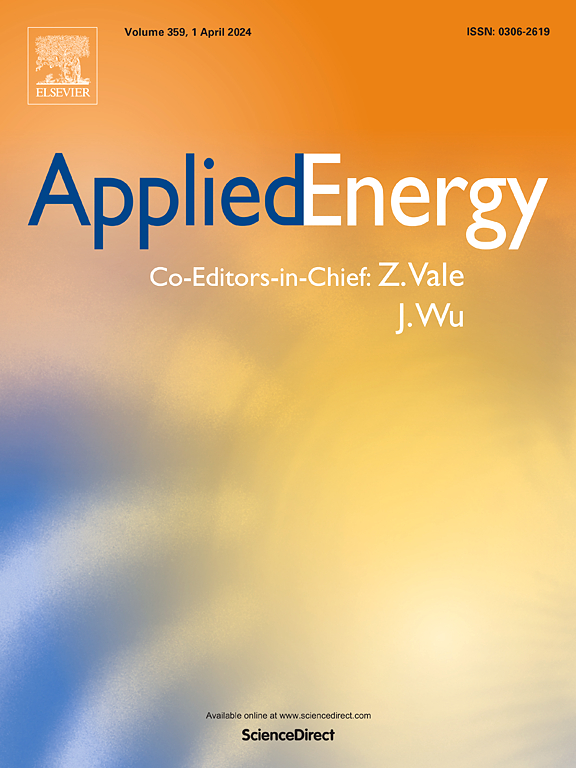Modeling and energy management of hangar thermo-electrical microgrid for electric plane charging considering multiple zones and resources
IF 10.1
1区 工程技术
Q1 ENERGY & FUELS
引用次数: 0
Abstract
Achieving net zero goals by 2050 is driving an energy transition towards clean electrical energy. Consequently, many initiatives have been proposed aiming to reduce carbon emissions in the building and transportation sectors, focusing, for instance, on the implementation of efficient heating and cooling systems based on heat pumps and the use of electric planes. Microgrids can effectively integrate thermal and electrical energy resources and loads to satisfy customer demands while providing technical, economic, and environmental benefits. Thus, this paper proposes the implementation of a model of a hangar microgrid and its Energy Management System to optimize the dispatch of resources of such thermo-electrical airport grid, using a Model Predictive Control approach to address uncertainties, and including a detailed building thermal model, heat pump modeling for the heating and cooling systems, and battery degradation. The proposed mathematical model of the Energy Management System is applied to a model of a microgrid being developed for a hangar at the Waterloo Wellington Flight Centre in Ontario, Canada, taking into account the specific characteristics of the microgrid’s components, the expected energy consumption of the equipment and the electric plane used for pilot training based on field measurements, and multi-room temperature control requirements, seeking to ensure a reliable and cost-effective operation, while considering the occupants’ comfort in different spaces. The results indicate that the proposed Energy Management System model, featuring multi-room temperature control through multiple thermal resources, can achieve significant savings in operational costs and CO2 emissions compared to a scenario where the microgrid is not deployed and another where a single-room building thermal model with a single heat pump is included.
求助全文
约1分钟内获得全文
求助全文
来源期刊

Applied Energy
工程技术-工程:化工
CiteScore
21.20
自引率
10.70%
发文量
1830
审稿时长
41 days
期刊介绍:
Applied Energy serves as a platform for sharing innovations, research, development, and demonstrations in energy conversion, conservation, and sustainable energy systems. The journal covers topics such as optimal energy resource use, environmental pollutant mitigation, and energy process analysis. It welcomes original papers, review articles, technical notes, and letters to the editor. Authors are encouraged to submit manuscripts that bridge the gap between research, development, and implementation. The journal addresses a wide spectrum of topics, including fossil and renewable energy technologies, energy economics, and environmental impacts. Applied Energy also explores modeling and forecasting, conservation strategies, and the social and economic implications of energy policies, including climate change mitigation. It is complemented by the open-access journal Advances in Applied Energy.
 求助内容:
求助内容: 应助结果提醒方式:
应助结果提醒方式:


